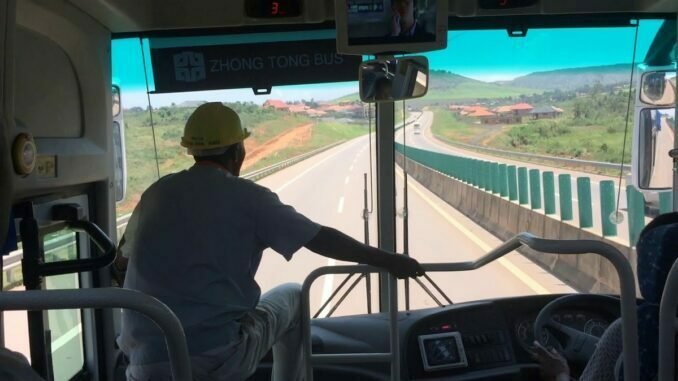
Kampala, Uganda | URN | There was a notable decline in the importation of buses by Ugandans over the last two years.
According to the Uganda Revenue Authority [URA], 190 buses were imported from different countries mainly China and Kenya, compared to 310 units in 2019 and 426 in 2018. However, there was no corresponding decline in taxes from the imports.
Revenues for 2019 amounted to 16.485 billion Shillings compared to about 13.6 billion Shillings in 2018. Last year, the tax raised amounted to 11.115 billion Shillings.
URA says that apart from the import volumes, the taxes are influenced by the types, the capacities and the brands which all determine the cost of the bus, and hence the tax levied.
URA categorizes a bus as a carrier of capacity above 25 passengers. It is not clear why the import volumes have been declining significantly, but URA’s acting Head of Corporate Affairs, Ian Rumanyika says that for last year, the closure of borders and the shutdown of economies due to the COVID-19 pandemic contributed to the decline.
In October last year, President Yoweri Museveni directed a ban on importation of buses, saying that Uganda now has the capacity to produce for the local market.
Uganda has two known bus factories, one being the Metu Zhongtong Bus Company Ltd, a joint venture between the Chinese automotive company Zhongtong and Ugandan businessman Metu Katabazi, which has its assembling plant in Namanve and Kiira Motors owned by the Kira Motor Corporation [KMC], which is constructing a production plant in Jinja.
A request to visit the Namanve plant was turned down because “the company’s operation has been affected badly by COVID-19 and so a tour of the plant will not be possible this month,” said an official on phone.
On commissioning, the company said they had the capacity to complete the assembling of 20 buses per month.
Kiira Motors on the other hand has successfully built two bus units, now operating commercially in and around Kampala, and says it currently has the capacity to produce 16 buses in partnership with Luwero Industries owned by the Ministry of Defense. The company expects that on commissioning in June, they will be able to produce 5,000 bus units a year.
KMC Chief Executive Paul Isaac Musasizi says they are waiting for Ugandans to place their orders and the buses will be produced and delivered.
The hope is also tied in the government-supported private projects like Tondeka Metro Bus, which last year revealed plans to import 1,000 buses for the city bus transit operations, a project worth about 600 billion Shillings.
Read Also: Science ministry denies claims that Kayoola solar buses were imported from China
There are ongoing discussions for the fleet to be partly locally produced, as the KMC/Luwero industries venture has started on the production of diesel-powered vehicles.
On electric buses, some bus owners say there is need for proper infrastructure including better roads to handle electric buses, as well as the establishment of planned stations along highways where the buses will be able to recharge.
The Kira EV vehicles are designed to run on battery for 80 km before recharge. Most buses of 50 or more passenger capacity operate long destinations beyond 200 km.



